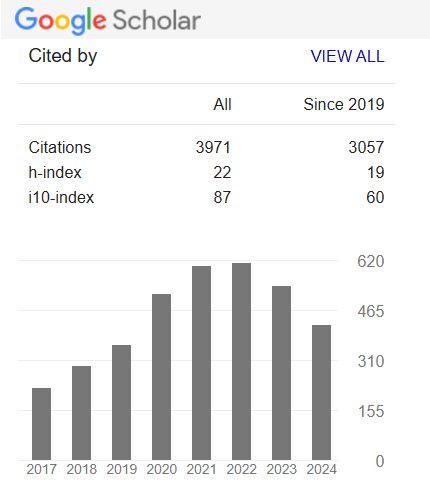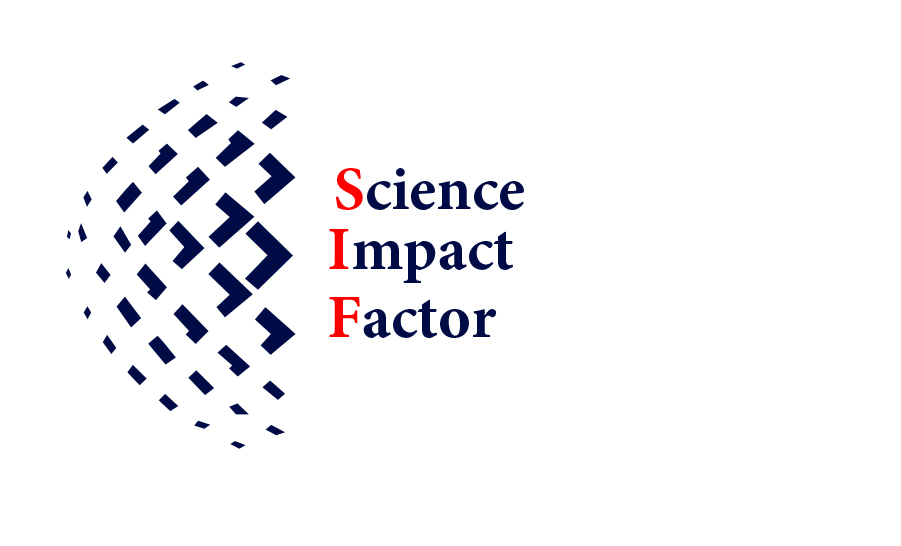Monterey Bay giant kelp forests and their potential to mitigate the impacts of climate change on local marine ecosystems
Keywords:
kelp forest, Macrocystis pyrifera, Climate change, ocean acidification, ecosystem, water physiochemistryAbstract
Unsustainable human activity poses a threat to oceanic health. Climate change, ocean acidification, ocean warming, and pollution interfere with aquatic communities and endanger marine life. Understanding the consequences of these threats will inform future endeavors in preservation and regeneration. While substantial research addresses seagrass' impacts on aquatic ecosystems, little is known about how kelp responds to these anthropogenic impacts. This study sought to assess the contributions of giant kelp forests (Macrocystis pyrifera) in Monterey Bay to the stability and health of the surrounding ecosystem. To achieve this, we conducted a longitudinal study measuring temperature, pH, dissolved oxygen (DO), and nutrient levels at multiple depths at sites along the kelp forest axis in two kelp forests. There was an observable trend across the surface samples, with higher pH and DO levels and lower nutrient levels in the center of the forest than on the edge and outside. Additionally, the pH and DO levels were elevated at the surface compared to those at depth, regardless of location along the kelp axis. The improved water quality within the kelp forests indicates a crucial role for kelp in regulating ocean chemistry and ecosystem balance, specifically in the bay in which the kelp forests reside.
Downloads
References
Adelsman, H. and Binder, L.W., 2012. Washington state blue ribbon panel on ocean acidification
(2012): ocean acidification: from knowledge to action. Olympia, Washington: Washington State’s strategic response.
Akinnawo, S.O., 2023. Eutrophication: Causes, consequences, physical, chemical and
biological techniques for mitigation strategies. Environmental Challenges, 12, p.100733.
Ashton, J.J.B.C. and Geary, L., 2011. The effects of temperature on pH measurement. Tsp, 1(2), pp.1-7.
Checkley Jr, D.M. and Barth, J.A., 2009. Patterns and processes in the California Current System. Progress in Oceanography, 83(1-4), pp.49-64.
Chislock, M.F., Doster, E., Zitomer, R.A. and Wilson, A.E., 2013. Eutrophication: causes, consequences, and controls in aquatic ecosystems. Nature Education Knowledge, 4(4), p.10.
Clark, M.S., 2020. Molecular mechanisms of biomineralization in marine invertebrates. Journal of Experimental Biology, 223(11), p.jeb206961.
Cloern, J.E., 2001. Our evolving conceptual model of the coastal eutrophication problem. Marine ecology progress series, 210, pp.223-253.
Cooley, S.R., Ono, C.R., Melcer, S. and Roberson, J., 2016. Community-level actions that can address ocean acidification. Frontiers in Marine Science, 2, p.128.
Cuvelier, D., Gollner, S., Jones, D.O., Kaiser, S., Arbizu, P.M., Menzel, L., Mestre, N.C., Morato, T., Pham, C., Pradillon, F. and Purser, A., 2018. Potential mitigation and restoration actions in ecosystems impacted by seabed mining. Frontiers in Marine Science, 5, p.467.
Delille, B., Borges, A.V. and Delille, D., 2009. Influence of giant kelp beds (Macrocystis pyrifera) on diel cycles of pCO2 and DIC in the Sub-Antarctic coastal area. Estuarine, Coastal and Shelf Science, 81(1), pp.114-122.
Doney, S.C., Fabry, V.J., Feely, R.A. and Kleypas, J.A., 2009. Ocean acidification: the other CO2 problem. Annual review of marine science, 1(1), pp.169-192.
Doney, S.C., Ruckelshaus, M., Emmett Duffy, J., Barry, J.P., Chan, F., English, C.A., Galindo, H.M., Grebmeier, J.M., Hollowed, A.B., Knowlton, N. and Polovina, J., 2012. Climate change impacts on marine ecosystems. Annual review of marine science, 4(1), pp.11-37.
Feely, R.A., Sabine, C.L., Hernandez-Ayon, J.M., Ianson, D. and Hales, B., 2008. Evidence for upwelling of corrosive" acidified" water onto the continental shelf. science, 320(5882), pp.1490-1492.
Frieder, C.A., Nam, S.H., Martz, T.R. and Levin, L.A., 2012. High temporal and spatial variability of dissolved oxygen and pH in a nearshore California kelp forest. Biogeosciences, 9(10), pp.3917-3930.
Jain, A.K., 2022. Global carbon budget 2022. Earth System Science Data, 14(11), pp.4811-4900.
Gattuso, J.P., Magnan, A., Billé, R., Cheung, W.W., Howes, E.L., Joos, F., Allemand, D., Bopp, L., Cooley, S.R., Eakin, C.M. and Hoegh-Guldberg, O., 2015. Contrasting futures for ocean and society from different anthropogenic CO2 emissions scenarios. Science, 349(6243), p.aac4722.
Harrison, P.J. and Hurd, C.L., 2001. Nutrient physiology of seaweeds: application of concepts to aquaculture. Cah Biol Mar, 42(1-2), pp.71-82.
Hauri, C., Gruber, N., Plattner, G.K., Alin, S., Feely, R.A., Hales, B. and Wheeler, P.A., 2009. Ocean acidification in the California current system. Oceanography, 22(4), pp.60-71.
Hirsh, H.K., Nickols, K.J., Takeshita, Y., Traiger, S.B., Mucciarone, D.A., Monismith, S. and Dunbar, R.B., 2020. Drivers of biogeochemical variability in a central California kelp forest: implications for local amelioration of ocean acidification. Journal of Geophysical Research: Oceans, 125(11), p.e2020JC016320.
Hoshijima, U. and Hofmann, G.E., 2019. Variability of seawater chemistry in a kelp forest environment is linked to in situ transgenerational effects in the purple sea urchin, Strongylocentrotus purpuratus. Frontiers in Marine Science, 6, p.62.
Jiang, L.Q., Carter, B.R., Feely, R.A., Lauvset, S.K. and Olsen, A., 2019. Surface ocean pH and buffer capacity: past, present and future. Scientific reports, 9(1), p.18624.
Kapsenberg, L. and Cyronak, T., 2019. Ocean acidification refugia in variable environments. Global Change Biology, 25(10), pp.3201-3214.
Knight, C.A., 2021. Causes and consequences of eutrophication, which are leading to water pollution. J. Prev. Med, 6(10), pp.118-119.
Koweek, D.A., Nickols, K.J., Leary, P.R., Litvin, S.Y., Bell, T.W., Luthin, T., Lummis, S., Mucciarone, D.A. and Dunbar, R.B., 2017. A year in the life of a central California kelp forest: physical and biological insights into biogeochemical variability. Biogeosciences, 14(1), pp.31-44.
Kulkarni, S.J., 2016. A review on research and studies on dissolved oxygen and its affecting parameters. International Journal of Research and Review, 3(8), pp.18-22.
Levin, L.A., 2018. Manifestation, drivers, and emergence of open ocean deoxygenation. Annual review of marine science, 10(1), pp.229-260.
Limburg, K.E., Breitburg, D., Swaney, D.P. and Jacinto, G., 2020. Ocean deoxygenation: A primer. One Earth, 2(1), pp.24-29.
Markfort, C.D. and Hondzo, M., 2009. Dissolved oxygen measurements in aquatic environments: the effects of changing temperature and pressure on three sensor technologies. Journal of Environmental quality, 38(4), pp.1766-1774.
McGlathery, K.J., Sundbäck, K. and Anderson, I.C., 2007. Eutrophication in shallow coastal bays and lagoons: the role of plants in the coastal filter. Marine Ecology Progress Series, 348, pp.1-18.
McNeil, C.L. and Farmer, D.M., 1995. Observations of the influence of diurnal convection on upper ocean dissolved gas measurements.
Mihailov, M.E., 2024. The Black Sea Upwelling System: Analysis on the Western Shallow Waters. Atmosphere, 15(8), p.999.
Mostofa, K.M., Liu, C.Q., Zhai, W., Minella, M., Vione, D., Gao, K., Minakata, D., Arakaki, T., Yoshioka, T., Hayakawa, K. and Konohira, E., 2016. Reviews and Syntheses: Ocean acidification and its potential impacts on marine ecosystems. Biogeosciences, 13(6), pp.1767-1786.
Oschlies, A., Brandt, P., Stramma, L. and Schmidtko, S., 2018. Drivers and mechanisms of ocean deoxygenation. Nature Geoscience, 11(7), pp.467-473.
Peck, L.S., Clark, M.S., Power, D., Reis, J., Batista, F.M. and Harper, E.M., 2015. Acidification effects on biofouling communities: winners and losers. Global change biology, 21(5), pp.1907-1913.
Reed, D.C., Rassweiler, A. and Arkema, K.K., 2008. Biomass rather than growth rate determines variation in net primary production by giant kelp. Ecology, 89(9), pp.2493-2505.
Steckbauer, A., Duarte, C.M., Carstensen, J., Vaquer-Sunyer, R. and Conley, D.J., 2011. Ecosystem impacts of hypoxia: thresholds of hypoxia and pathways to recovery. Environmental Research Letters, 6(2), p.025003.
Strong-Wright, J. and Taylor, J.R., 2022. Modeling the growth potential of the kelp Saccharina latissima in the North Atlantic. Frontiers in Marine Science, 8, p.793977.
Towle, D.W. and Pearse, J.S., 1973. Production of the giant kelp, Macrocystis, estimated by in situ incorporation of 14C in polyethylene bags 1. Limnology and Oceanography, 18(1), pp.155-159.
Tromans, D., 1998. Temperature and pressure dependent solubility of oxygen in water: a thermodynamic analysis. Hydrometallurgy, 48(3), pp.327-342.
Walter, R.K., Woodson, C.B., Arthur, R.S., Fringer, O.B. and Monismith, S.G., 2012. Nearshore internal bores and turbulent mixing in southern Monterey Bay. Journal of Geophysical Research: Oceans, 117(C7).
Wassmann, P., 2005. Cultural eutrophication: perspectives and prospects. In Drainage basin nutrient inputs and eutrophication: an integrated approach, University of Tromsø, Norway.
Zimmerman, R.C. and Kremer, J.N., 1986. In situ growth and chemical composition of the giant kelp, Macrocystis pyrifera: response to temporal changes in ambient nutrient availability. Marine Ecology Progress Series, 27(2), pp.277-285.
Downloads
Published
How to Cite
Issue
Section
License
Copyright (c) 2024 Brianna Sciuto

This work is licensed under a Creative Commons Attribution-NonCommercial-NoDerivatives 4.0 International License.
Open Access This article is licensed under a Creative Commons Attribution 4.0 International License, which permits use, sharing, adaptation, distribution and reproduction in any medium or format, as long as you give appropriate credit to the original author(s) and the source, provide a link to the Creative Commons license, and indicate if changes were made. The images or other third party material in this article are included in the article’s Creative Commons license unless indicated otherwise in a credit line to the material. If the material is not included in the article’s Creative Commons license and your intended use is not permitted by statutory regulation or exceeds the permitted use, you will need to obtain permission directly from the copyright holder. To view a copy of this license, visit http://creativecommons.org/ licenses/by/4.0/










